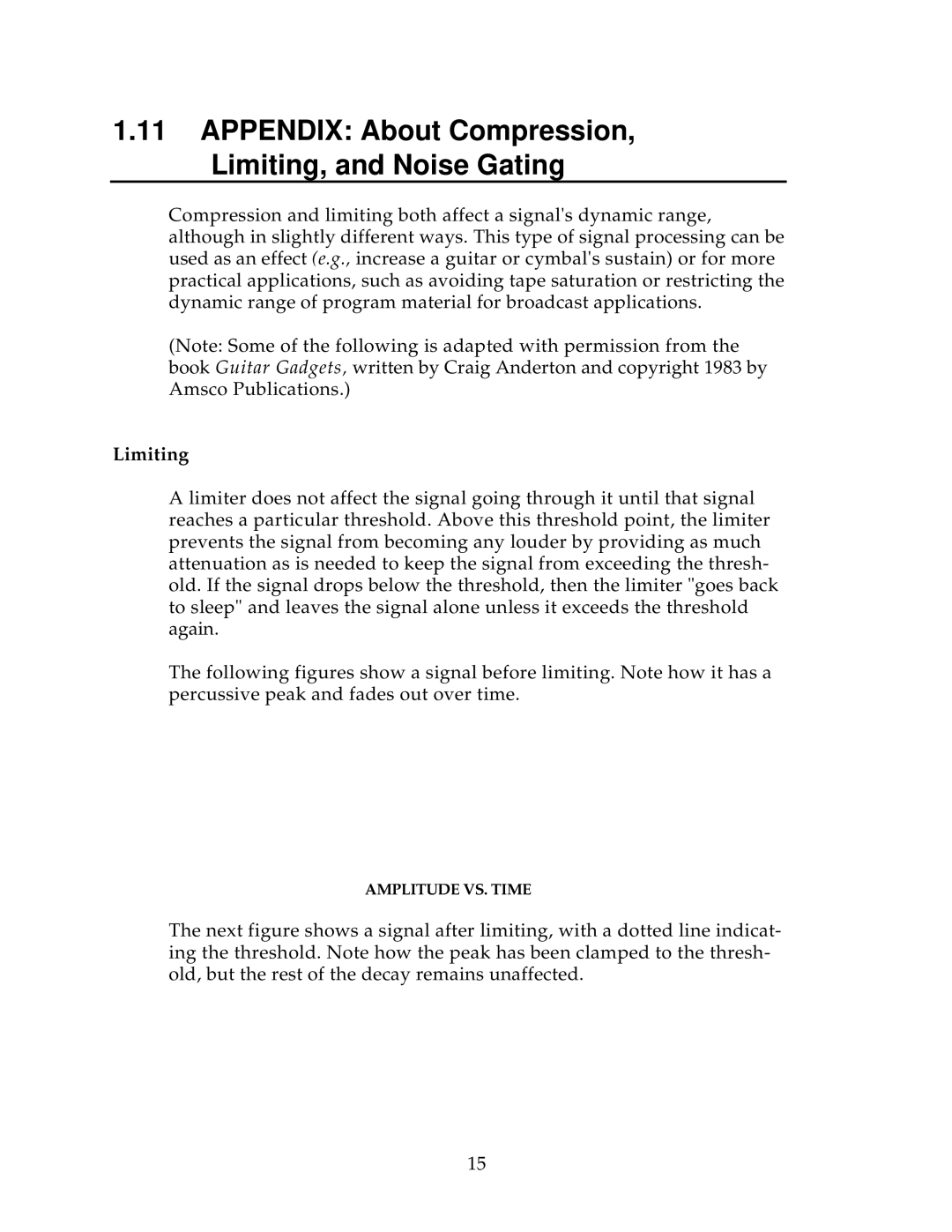1.11APPENDIX: About Compression, Limiting, and Noise Gating
Compression and limiting both affect a signal's dynamic range, although in slightly different ways. This type of signal processing can be used as an effect (e.g., increase a guitar or cymbal's sustain) or for more practical applications, such as avoiding tape saturation or restricting the dynamic range of program material for broadcast applications.
(Note: Some of the following is adapted with permission from the book Guitar Gadgets, written by Craig Anderton and copyright 1983 by Amsco Publications.)
Limiting
A limiter does not affect the signal going through it until that signal reaches a particular threshold. Above this threshold point, the limiter prevents the signal from becoming any louder by providing as much attenuation as is needed to keep the signal from exceeding the thresh- old. If the signal drops below the threshold, then the limiter "goes back to sleep" and leaves the signal alone unless it exceeds the threshold again.
The following figures show a signal before limiting. Note how it has a percussive peak and fades out over time.
AMPLITUDE VS. TIME
The next figure shows a signal after limiting, with a dotted line indicat- ing the threshold. Note how the peak has been clamped to the thresh- old, but the rest of the decay remains unaffected.
15
